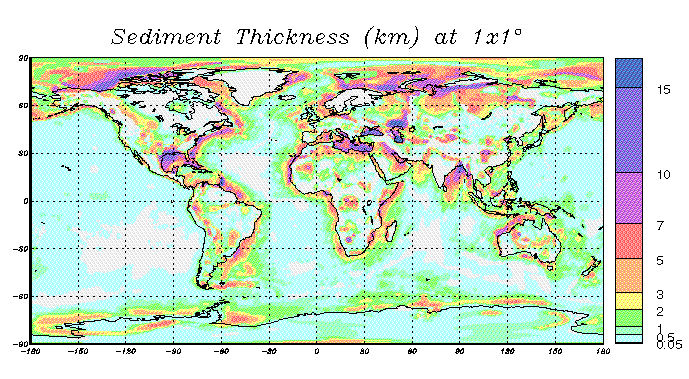CPT Q. 068: Why are trenches filled mostly with continent-derived sediments?

Table of Contents
Q. 68. Can you provide detailed, empirically-based explanations for the following deep-sea trench features: (1) dominance of continent-derived sediments (rather than oceanic as UPT would predict); (2) graben-like geomorphology (i.e., being bounded on both the ocean side and continent/arc side of the trench by normal/gravity faults); and (3) no convergence features within sediments (as expected by UPT theory)?
Response:
1. Dominance of continent-derived sediments
In regard to (1) as to why continent-derived sediments are dominant in the deep ocean trenches, it is because the continents are the dominant source of sediments generally. As I explained in my answer to question 42, the continents are generally where water depths are small, where water speeds can be high, where significant erosion occurs, and where longer distance sediment transport can take place. There I state, “Water’s ability to keep its sediment load in suspension depends very strongly on its speed. When the water speed becomes low, it has almost no ability to carry sediment, and the sediment falls out of suspension. This implies that, at least in a general sense, deep water represents a severe barrier to sediment transport.” By contrast, in the ocean depths the water velocities in general are tiny, there is essentially no erosion, and very little sediment transport occurs. I also addressed these issues in even more detail in my answer to question 29 where I included the following figure. Note how clear it is that the overwhelming source of sediment in the ocean basins is from adjacent continents.

2. Graben-like geomorphology
In regard to (2), the vast majority of the deep-ocean trenches, themselves, do not display graben-like morphology. Here is quote from the Wikipedia article on ‘oceanic trench’ (I have added the italics for emphasis):
Trenches are centerpieces of the distinctive physiography of a convergent plate margin. Transects across trenches yield *asymmetric& profiles, with relatively gentle (~5°) outer (seaward) slope and a steeper (~10–16°) inner (landward) slope. This asymmetry is due to the fact that the outer slope is defined by the top of the downgoing plate, which must bend as it starts its descent. The great thickness of the lithosphere requires that this bending be gentle. As the subducting plate approaches the trench, it is first bent upwards to form the outer trench swell, then descends to form the outer trench slope. The outer trench slope is disrupted by a set of subparallel normal faults which staircase the seafloor down to the trench. The plate boundary is defined by the trench axis itself. Beneath the inner trench wall, the two plates slide past each other along the subduction decollement, the seafloor intersection of which defines the trench location. The overriding plate contains volcanic arc (generally) and a forearc. The volcanic arc is caused by physical and chemical interactions between the subducted plate at depth and asthenospheric mantle associated with the overriding plate.
Even though the Wikipedia article is written from a uniformitarian viewpoint in general, I consider this description of ocean trench morphology as accurate and free of uniformitarian bias. One point I want to make here is that grabens bounded by normal faults are indeed common in ocean trench environments as this article indicates. They are parallel to the trench axis and occur on what is called the outer trench slope. These grabens, basically cracks, are a consequence of the bending downward of the oceanic plate as it dives into the mantle along the axis of the trench. But these features in no way suggest that the trench itself is a huge fault-bounded graben in the normal sense of the term!
3. Lack of convergence features within sediments
In regard to point (3), a lack of convergence features is true for only some of the trenches in the world. Others, such as the Nankai Trough on Japan’s east coast, display indisputable evidence for convergence and active development of an accretionary wedge in the present day. (See my answer to question 4.)